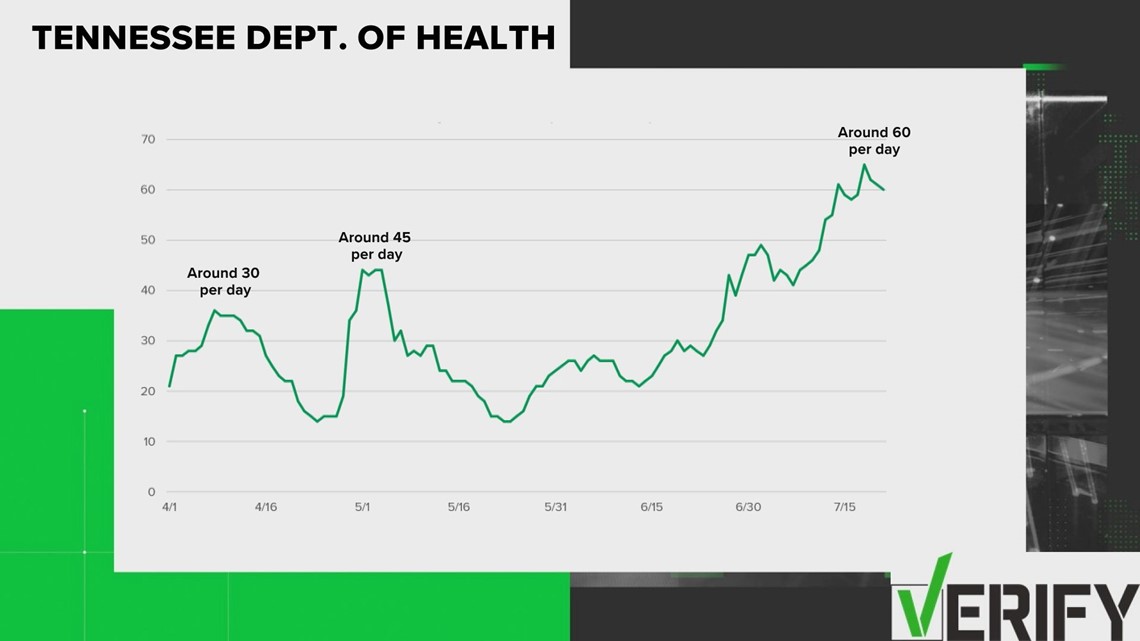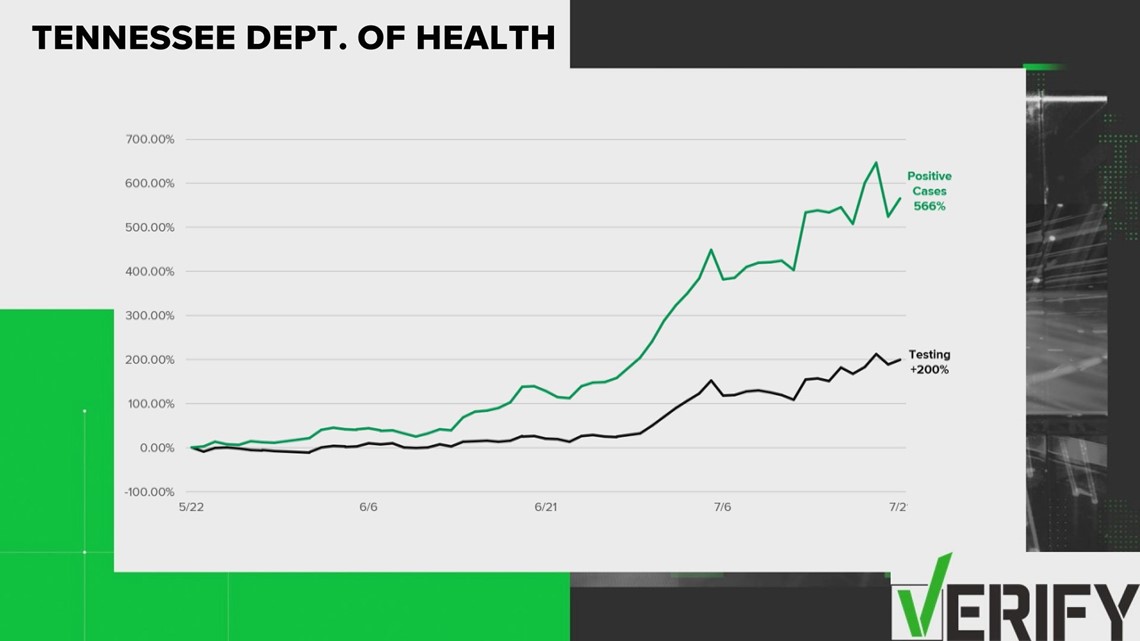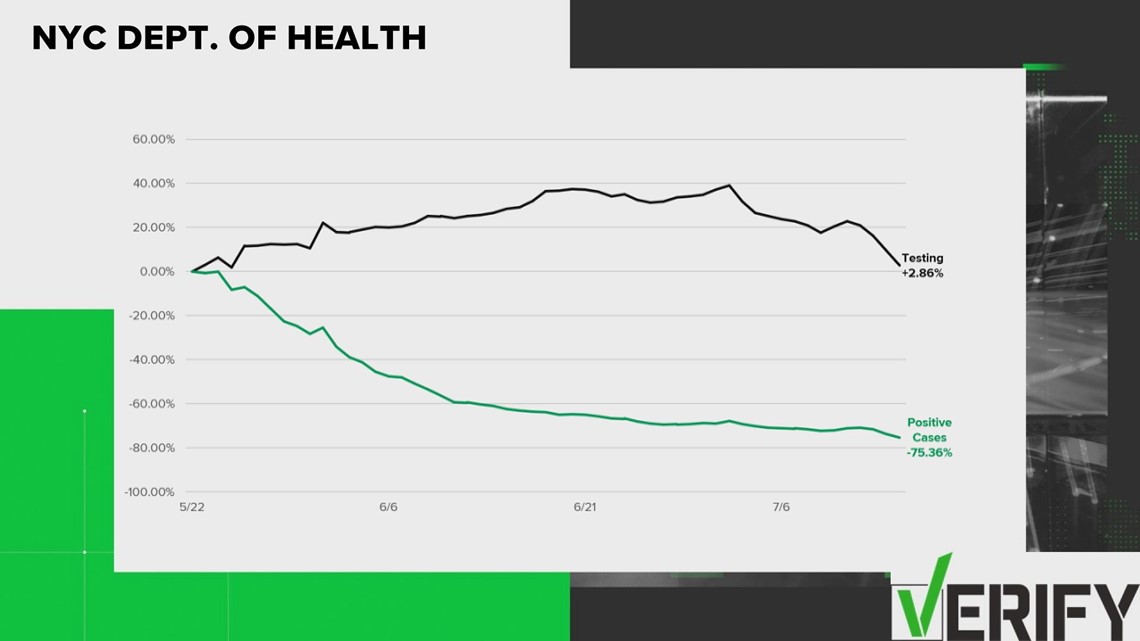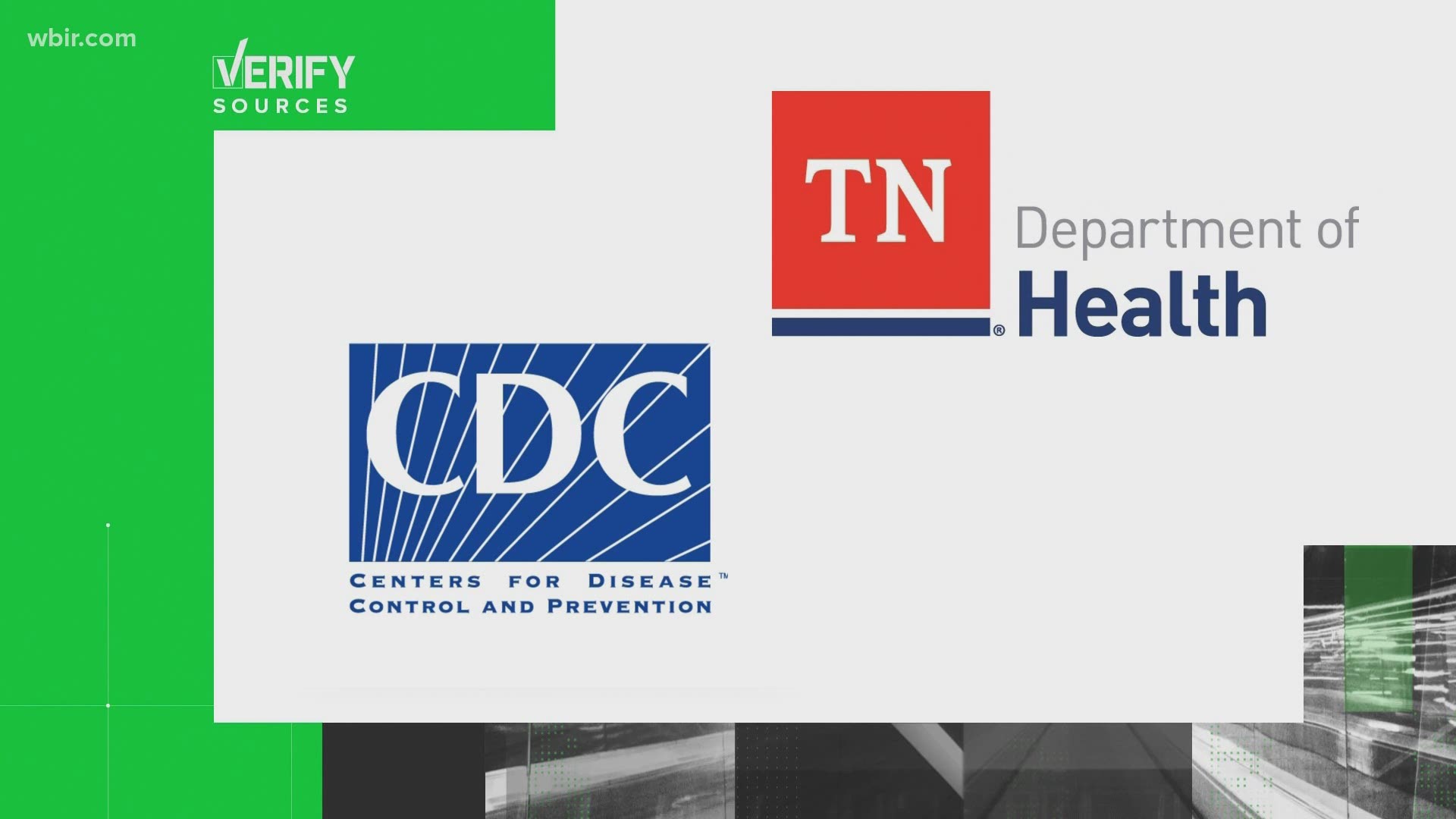KNOX COUNTY, Tenn. — QUESTION: In the big picture, are hospitalizations and deaths dropping?
VERIFY: No, more Tennesseans are being hospitalized with COVID-19 and more Tennesseans are dying from COVID-19, per Tennessee Department of Health data.
Let's start with hospitalizations: in early April, the TDH was reporting about 30 new hospitalizations a day. That number peaked around 45 in early May and then declined for a couple of weeks.
But since early June, it's trended up. As of July 21, the seven-day average showed about 60 new hospitalizations a day — double the number TDH was reporting in early April.


As for deaths, Tennessee has mainly averaged between 4 and 7 deaths a day until recently. In mid-June, the daily average rose to about 8 or 9 deaths. Now, it's closer to 13 or 14 deaths a day.
While the percent of individuals with COVID-19 requiring hospitalization or dying has declined, the actual number of people being hospitalized or dying from COVID-19 is going up.
QUESTION: Is increased testing responsible for the rise in cases?
VERIFY: No, more testing does not necessarily mean more cases.
For this question, we went to the Tennessee Department of Health and the New York City Health Department, both of which track COVID-19 testing and positives for their respective areas.
For the week of May 22, Tennessee was reporting about 8,000 new test results a day. For the week of July 22, Tennessee is reporting about 24,000 new test results a day. That's a 200 percent increase.
Now let's look at positives. In that same time frame, Tennessee has gone from about 350 new positives a day to 2,600 positives a day. That's about a 566 percent increase. So positives are increasing much faster than tests.


In New York City, health officials show the opposite. Testing has marginally increased since the week of May 22, but positives have actually declined from about 1,400 a day to just over 300 a day as of July 18. That's a 75 percent decrease.
In this case, increased testing does not result in increased positives because community transmission is lower.


According to Johns Hopkins University, the rate of positivity "is an important indicator because it can provide insights into whether a community is conducting enough testing to find cases."
From July 1 to July 21, Tennessee had processed 444,627 tests and 45,352 had returned positive. That's about 10.2 percent of all tests.
From July 1 to July 18, New York City had processed 383,123 tests and 6,438 had returned positive. That's about 1.7 percent of all tests.
QUESTION: Is COVID-19 deadlier than the flu?
VERIFY: Yes, COVID-19 is deadlier than the flu, according to the Centers for Disease Control database and the Tennessee Department of Health.
The CDC's Underlying Cause of Death database shows the heart disease (40.63 deaths/day), cancer (38.79 deaths/day) and accidents (12.15 deaths/day) are the three leading causes of death for Tennesseans in July.
Influenza and pneumonia combined to rank ninth, with about 3.12 deaths a day in Tennessee.
The Tennessee Department of Health had reported 267 deaths from COVID-19 from July 1 to 21, which is approximately 12.71 deaths a day.
That would put it third on the CDC's list, only behind heart disease and cancer.
Even during peak flu season, COVID-19 would surpass influenza and pneumonia on the CDC's leading cause of death list if it continues at this rate.
Based on the 2014 to 2018 averages, the CDC reported the following deaths per day for influenza and pneumonia in Tennessee: December (5.34), January (7.74), February (6.49), March (5.35) and April (4.59).
QUESTION: Are individuals who test positive multiple times counted as multiple cases?
VERIFY: No, each person can only be counted once in the total number of cases, per the Tennessee Department of Health.
As of July 21, the Tennessee Department of Health was reporting 81,122 confirmed cases of COVID-19 and 95,765 positive test results. If someone tests positive more than once, their results will show under the "positive" column multiple times, but not in the "case" column. That is why there is a difference of nearly 15,000 cases.




